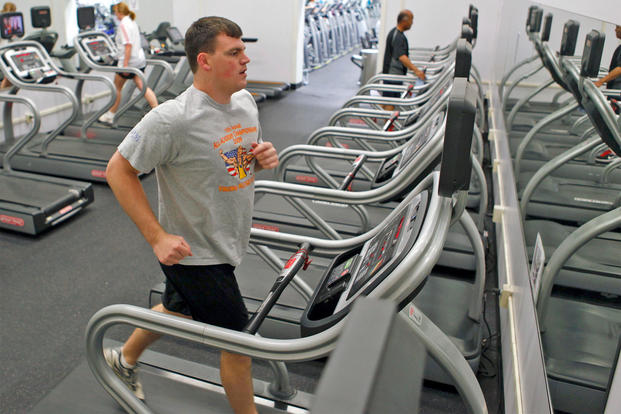When people think of a “recovery day,” many take a day off from physical activity. This is better known as a “rest day” in most circles. A “recovery day” is still a workout, but it is arranged in a way to help you loosen aching joints and muscles with a focus on mobility and flexibility. As you will see below, it is not a day off -- nor easy:
Recovery workout
Warm up five minutes with a walk, jog, bike, etc.
After a solid warmup, using some form of movement, add a five- to 10-minute session of dynamic stretches to move the joints thoroughly in a full range of motion, gradually getting faster and faster each time through.
Now you are ready to do some non-impact aerobic activity. We recommend non-impact options just to rest the body from any running or rucking or heavy lifting for a day. Typically, you should place this day in the middle of your training week, like Day 3 or Day 4. You will find that Day 5 and Day 6 of your training week will be much more productive with an active recovery day.
You can make this non-impact activity (bike, elliptical, rowing, swimming) anaerobic if you prefer, with workouts like Tabata intervals (20-second sprint/10 seconds easy) or pyramid sets, where the activity becomes harder with each minute (i.e., speed, resistance, incline on cardio machines).
If you feel like working your lungs harder on your recovery day, go for it. However, if you prefer five-minute sets of easy to moderate-level intensity, keep your heart rate down with aerobic-level intensity (lower heart rate):
Repeat four times
Row, elliptical or bike using the Tabata interval (20 seconds fast/10 seconds easy) -- five minutes
Five minutes of stretching and/or foam-roll
*The key to this recovery day is that you get some form of cardio activity, followed by five minutes of stretching and foam-rolling sections of your body. You can opt to do nothing but stretch or just foam-roll for each set if you prefer, or mix both in the five-minute, off-the-cardio window.
You also could add some pool time. You do not need to swim, but treading water and doing your dynamic stretches in chest-deep water is one of the most therapeutic movements you can do -- even if recovering from injury.
Dynamic stretches: 5-10 minutes (pool or ground)
Conclude the day with a series of static stretches, either immediately after the workout or later in the day. Staying flexible, especially after sitting or standing for several hours, will help with your recovery day and the days that come after it.
Static stretches: 5 minutes
Stew Smith is a former Navy SEAL and fitness author certified as a Strength and Conditioning Specialist (CSCS) with the National Strength and Conditioning Association. Visit his Fitness eBook store if you’re looking to start a workout program to create a healthy lifestyle. Send your fitness questions to stew@stewsmith.com.
Want to Learn More About Military Life?
Whether you're thinking of joining the military, looking for fitness and basic training tips, or keeping up with military life and benefits, Military.com has you covered. Subscribe to Military.com to have military news, updates and resources delivered directly to your inbox.


















